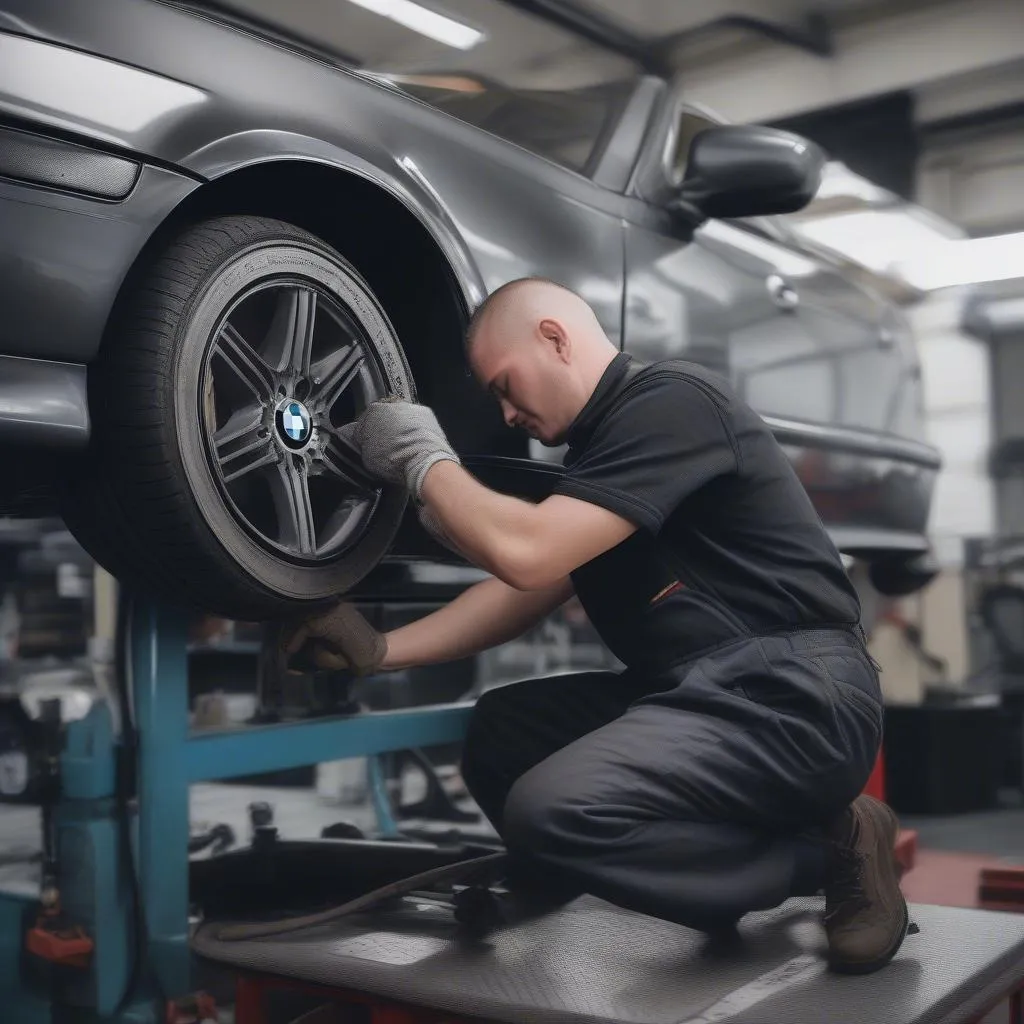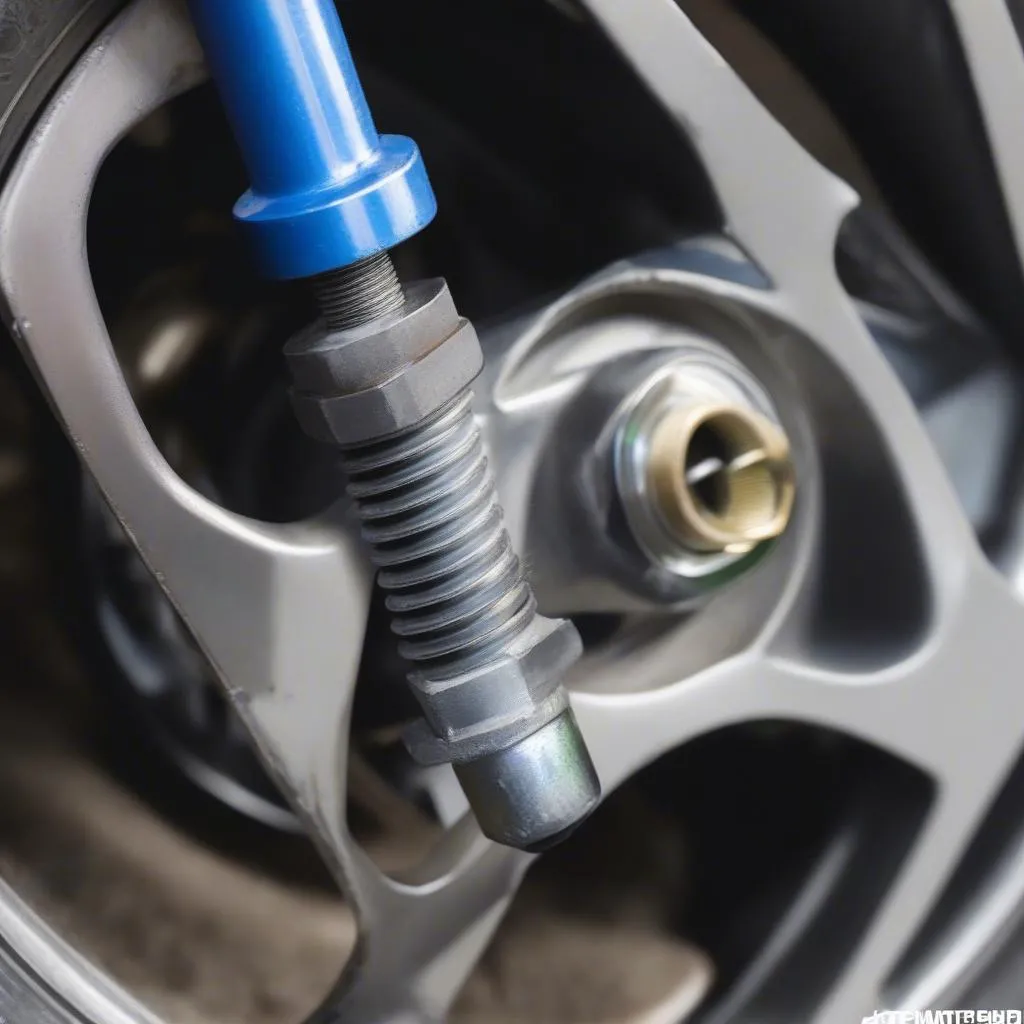Camber BMW E36: Everything You Need to Know
Have you ever wondered what camber is and why it’s important for your BMW E36? You’re not alone. Many car owners, especially those with performance-oriented vehicles like the BMW E36, are curious about this crucial aspect of suspension geometry. Let’s delve into the world of camber and how it impacts your E36’s handling.
Understanding Camber: A Key to Better Handling
Camber is the angle of a wheel as viewed from the front of the car. Imagine drawing a vertical line through the center of your wheel. A wheel with positive camber leans outwards, away from the vehicle, while negative camber leans inwards, towards the vehicle.
Why is Camber Important?
From a mechanic’s perspective, camber plays a vital role in tire wear and contact patch. When a car is turning, the weight shifts to the outside wheels, affecting the tire’s contact with the road. A proper camber angle ensures that the tire remains in contact with the road surface for optimal grip and traction.
Technically speaking, a slight negative camber is generally beneficial for cornering. It maximizes the contact patch of the outer tire, allowing the car to lean into the corner and maintain grip. However, too much camber can lead to uneven tire wear and increased tire stress.
From an economic standpoint, understanding camber can save you money. Properly aligning your camber can help you avoid premature tire wear and costly replacements, which can be a significant expense for a BMW E36.
How Camber Affects Your BMW E36
Imagine this scenario: You’re driving your E36 down a winding road, feeling the thrill of the curves. Suddenly, you notice the steering wheel feels loose, and the car feels unstable. This could be a sign that your camber settings need adjusting.
Common Camber Issues and Solutions
Here are some common issues related to camber in BMW E36s:
- Uneven Tire Wear: Excessive camber can lead to uneven wear on the inside or outside edges of the tire.
- Poor Handling: Incorrect camber settings can make your car feel unstable and less responsive, especially when cornering.
- Increased Tire Stress: Too much negative camber can put extra stress on the tire, potentially leading to premature tire failure.
Fortunately, adjusting camber is a relatively simple process:
- Camber Bolts: These adjustable bolts are used to modify the camber angle of your E36’s suspension.
- Camber Plates: These adjustable plates replace the stock suspension mounts and allow you to adjust camber, caster, and even ride height.
Expert Tip: “Camber adjustment is a delicate process that requires careful attention to detail. Always consult with a qualified mechanic or technician to ensure proper alignment and adjustments.” – David Miller, author of “BMW E36: The Complete Guide to Repair and Maintenance.”
What is the Ideal Camber for My E36?
The ideal camber setting for your E36 depends on several factors, including:
- Tire Size: Wider tires will generally require more negative camber for optimal cornering performance.
- Driving Style: Aggressive driving styles require more negative camber than casual driving.
- Suspension Modifications: Modified suspension setups may require different camber settings.
Example: A common camber setting for a stock BMW E36 is -1.5 degrees. However, if you’re running wider tires or a more aggressive suspension, you may need to adjust the camber to -2.0 degrees or even -2.5 degrees.
Maintaining Proper Camber
Imagine this scenario: You’ve carefully set the camber on your E36, but over time you notice the handling has changed. This is likely due to wear and tear on the suspension components.
Here are some tips to help maintain proper camber:
- Regular Inspections: Have your camber checked regularly during routine maintenance or after hitting a pothole or other impact.
- Replace Worn Suspension Components: Worn control arms, ball joints, or other suspension components can affect camber settings.
FAQs About Camber on BMW E36s
Q1: What does camber mean in simple terms?
A1: Camber refers to the angle of your car’s wheels when viewed from the front. Positive camber means the wheels lean outwards, while negative camber means the wheels lean inwards.
Q2: How can I tell if my camber is off?
A2: You can often tell by looking at your tires. If the outer edges are wearing more than the inner edges, you likely have too much negative camber.
Q3: What are the risks of ignoring camber issues?
A3: Ignoring camber issues can lead to premature tire wear, poor handling, and potentially even a dangerous driving experience.
Q4: Where can I get my camber adjusted?
A4: Many auto repair shops and tire centers offer camber alignment services.
Conclusion
Camber is a critical aspect of suspension geometry that affects your BMW E36’s handling, tire wear, and overall driving experience. By understanding camber and keeping your car properly aligned, you can enjoy optimal performance, safety, and tire life. If you have any questions about camber or need help with your E36, don’t hesitate to reach out to us. We have a team of experienced professionals who are ready to help you keep your car in top condition.
Contact us today via WhatsApp: +84767531508 for assistance with diagnostics and other automotive needs.
 BMW E36 Camber Alignment: Close-up of a mechanic adjusting camber settings using a specialized alignment machine.
BMW E36 Camber Alignment: Close-up of a mechanic adjusting camber settings using a specialized alignment machine.
 BMW E36 Camber Bolts: Close-up of adjustable camber bolts installed on a BMW E36 suspension.
BMW E36 Camber Bolts: Close-up of adjustable camber bolts installed on a BMW E36 suspension.
